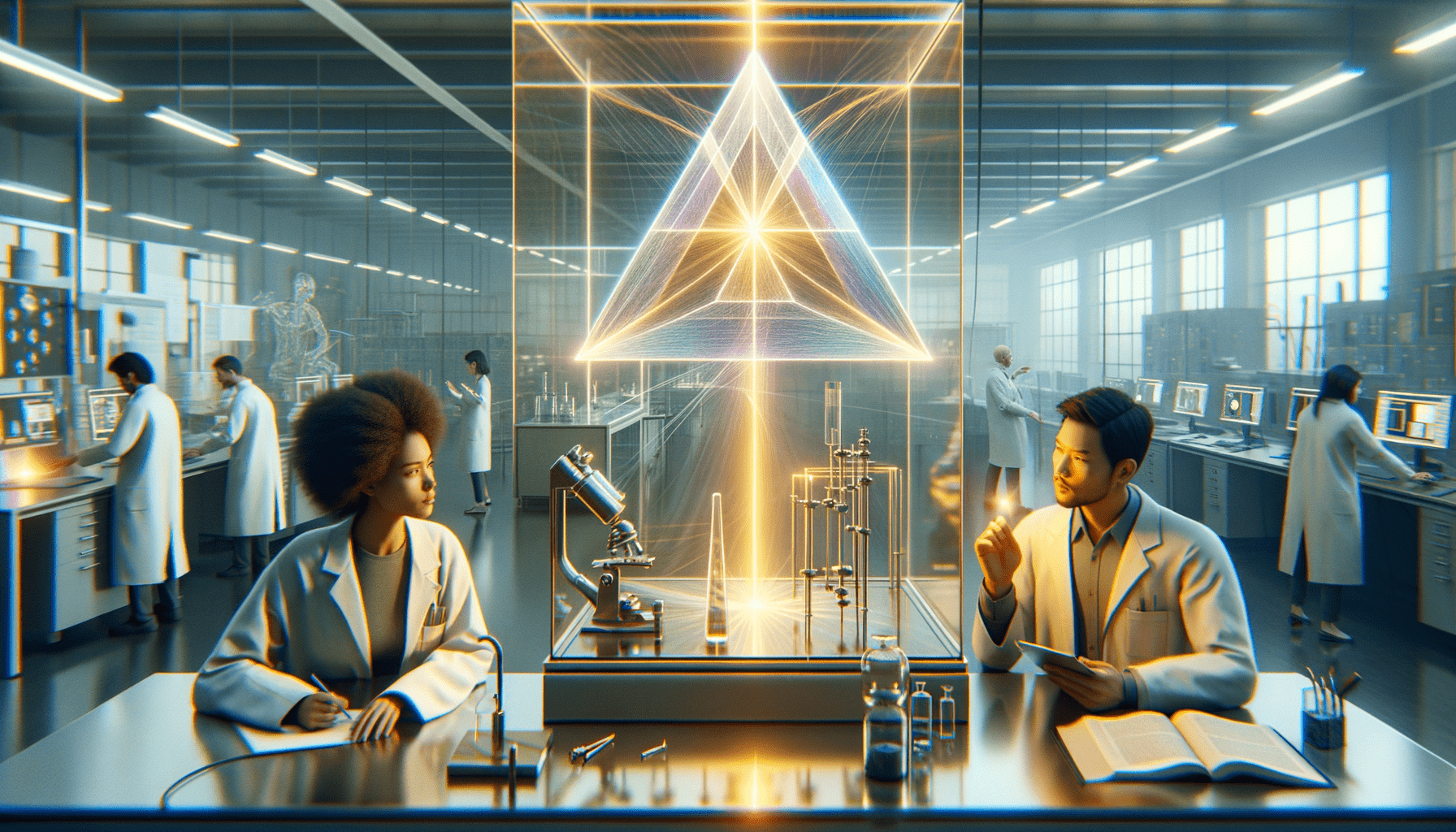In the world of video game development, achieving realistic lighting effects is crucial for creating immersive experiences. One technique that has gained attention is photon mapping ray tracing, which enhances the visual quality of games by simulating complex light interactions. This article explores the fundamentals of photon mapping, its application in the gaming industry, and how it can solve common challenges faced by developers.
Understanding Photon Mapping
Key Points
- Photon mapping is a two-pass global illumination algorithm.
- It simulates complex light interactions like caustics and subsurface scattering.
- Photon mapping is a biased rendering technique, unlike path tracing.
- It is particularly useful for scenes with complex lighting effects.
- Photon mapping can be integrated with existing rendering engines.
Overview of Photon Mapping
Photon mapping is a rendering technique that simulates the way light interacts with surfaces in a scene. Developed by Henrik Wann Jensen, it involves two main passes: photon tracing and rendering. In the first pass, photons are emitted from light sources and stored in a photon map when they hit surfaces. This map is then used in the second pass to calculate the lighting for each pixel, resulting in realistic effects like caustics and diffuse interreflection.
The algorithm is known for its ability to handle complex lighting scenarios. Unlike path tracing, which traces rays from the camera, photon mapping traces rays from the light source, making it more efficient for certain effects. This technique is particularly adept at simulating caustics, which are patterns of light created when light is focused through a transparent object, like a glass of water.
Photon mapping is a biased technique, meaning it does not converge to the exact solution of the rendering equation. However, it is consistent, and increasing the number of photons can improve accuracy. This makes it a valuable tool for game developers looking to achieve high-quality lighting without the computational cost of unbiased methods like path tracing.
Applications in Game Development
In the gaming industry, photon mapping enhances the realism of virtual environments. By accurately simulating light interactions, developers can create more immersive and visually appealing games. This technique is particularly useful for scenes with complex lighting, such as those involving water, glass, or other transparent materials.
Photon mapping can be integrated into existing game engines, allowing developers to leverage its benefits without starting from scratch. Many modern engines support photon mapping as part of their rendering pipeline, making it accessible to small and medium-sized studios. This integration helps developers overcome the challenges of creating realistic lighting effects within the constraints of limited resources.
Despite its advantages, photon mapping requires a certain level of expertise to implement effectively. Developers need to understand the nuances of the algorithm and how to optimize it for their specific needs. This can be a barrier for smaller studios with limited technical resources, but the potential benefits make it a worthwhile investment for those looking to push the boundaries of visual fidelity.
Challenges in Game Development Lighting

Complex Lighting Scenarios
One of the biggest challenges in game development is simulating complex lighting scenarios. Traditional rendering techniques often struggle with effects like caustics, subsurface scattering, and diffuse interreflection. These effects are crucial for creating realistic environments, but they can be computationally expensive and difficult to achieve with standard methods.
Developers often face limitations in terms of hardware and software capabilities. Small and medium-sized studios may not have access to the latest technology, making it challenging to implement advanced lighting techniques. This can result in games that lack the visual polish needed to stand out in a competitive market.
Resource Constraints
Another significant challenge is the constraint on resources. Smaller studios often operate with limited budgets and manpower, making it difficult to invest in high-end rendering solutions. This can lead to compromises in visual quality, as developers must balance the need for realistic lighting with the available resources.
Photon mapping offers a solution by providing a more efficient way to achieve complex lighting effects. However, implementing this technique requires a certain level of expertise and understanding of the underlying algorithms. This can be a barrier for studios without dedicated technical artists or rendering specialists.
Balancing Realism and Performance
Achieving a balance between realism and performance is a constant struggle for game developers. High-quality lighting effects can significantly enhance a game’s visual appeal, but they can also impact performance, especially on lower-end hardware. Developers must find ways to optimize their rendering pipeline to deliver both stunning visuals and smooth gameplay.
Photon mapping can help by providing a more efficient way to simulate complex lighting interactions. By leveraging this technique’s strengths, developers can achieve realistic lighting effects without sacrificing performance. However, this requires careful planning and optimization to ensure that the benefits outweigh the costs.
Implementing Photon Mapping in Game Development
Step 1: Setting Up the Photon Map
The first step in implementing photon mapping is to set up the photon map. This involves emitting photons from the light sources in the scene and storing their interactions with surfaces. Developers need to determine the number of photons to emit and how to distribute them across the scene. This step is crucial for achieving accurate lighting effects.
Photon emission can be optimized using techniques like projection maps, which direct photons towards important objects in the scene. This helps ensure that the photon map accurately represents the lighting interactions, leading to more realistic results. Developers must also consider the storage and retrieval of photons, as this can impact performance.
Step 2: Rendering with Photon Mapping
Once the photon map is set up, the next step is to use it for rendering. This involves calculating the lighting for each pixel in the scene based on the stored photon interactions. Developers need to balance the accuracy of the lighting with the performance of the rendering process, as more accurate results can be computationally expensive.
Photon mapping can be combined with other rendering techniques, such as ray tracing, to achieve a balance between realism and performance. By leveraging the strengths of each method, developers can create visually stunning games that run smoothly on a variety of hardware configurations.
Step 3: Optimizing for Performance
Optimization is a critical step in implementing photon mapping in game development. Developers need to find ways to reduce the technique’s computational cost while maintaining high visual quality. This can involve techniques like importance sampling, which focuses computational resources on the most significant lighting interactions.
Developers can also explore hardware acceleration options, such as using GPUs to speed up the rendering process. By leveraging the power of modern hardware, developers can achieve real-time photon mapping, making it a viable option for interactive applications like video games.
FAQs
What is photon mapping in ray tracing?
Photon mapping is a rendering technique used in ray tracing to simulate complex light interactions. It involves tracing photons from light sources and storing their interactions with surfaces in a photon map, which is then used to calculate lighting for each pixel.
How does photon mapping differ from path tracing?
Photon mapping differs from path tracing in that it traces rays from the light source rather than the camera. This makes it more efficient for certain lighting effects, such as caustics, but it is a biased technique, meaning it does not converge to the exact solution of the rendering equation.
Can photon mapping be used in real-time applications?
Photon mapping can be used in real-time applications with the help of hardware acceleration techniques, such as using GPUs. By optimizing the rendering process, developers can achieve real-time photon mapping, making it suitable for interactive applications like video games.
What are the benefits of using photon mapping in game development?
Photon mapping offers several benefits in game development, including the ability to simulate complex lighting effects like caustics and subsurface scattering. It can enhance the realism of virtual environments and be integrated into existing rendering engines, making it accessible to small and medium-sized studios.
Future of Photon Mapping in Game Development
The future of photon mapping in game development looks promising, with advancements in technology and rendering techniques paving the way for more realistic and immersive experiences. Here are five predictions for the future of photon mapping in the industry:
- Increased adoption of real-time photon mapping: As hardware capabilities continue to improve, real-time photon mapping will become more accessible, allowing developers to create highly realistic lighting effects in interactive applications.
- Integration with AI-driven rendering techniques: The use of artificial intelligence in rendering will enhance photon mapping by optimizing photon distribution and improving the accuracy of lighting simulations.
- Expansion of photon mapping in virtual reality: Photon mapping will play a crucial role in creating immersive virtual reality experiences by providing realistic lighting and enhancing the sense of presence.
- Development of hybrid rendering solutions: Combining photon mapping with other rendering techniques, such as ray tracing and path tracing, will lead to more efficient and visually stunning results.
- Advancements in photon mapping algorithms: Ongoing research and development will lead to more efficient photon mapping algorithms, reducing computational costs and making the technique more accessible to smaller studios.
More Information
- Photon mapping – Wikipedia: A comprehensive overview of photon mapping, its history, and applications.
- What’s the difference between path tracing, ray tracing and photon mapping? – Hacker News: A discussion on the differences between various rendering techniques.
- Photon Mapping – Zack Waters: An in-depth exploration of photon mapping and its implementation.
- High-Quality Rendering Course – Pixar: A detailed paper on rendering techniques, including photon mapping.
- Visualization Radiosity and Photon Mapping – Stony Brook University: A resource on visualization techniques, including photon mapping.
Disclaimer
This is an AI-generated article intended for educational purposes. It does not provide advice or recommendations for implementation. The goal is to inspire readers to research and delve deeper into the topics covered.
- The Agentic Startup Manifesto - June 8, 2025
- Remote Hiring in 2025 - April 5, 2025
- Burnout in Remote Teams: How It’s Draining Your Profits - January 27, 2025
